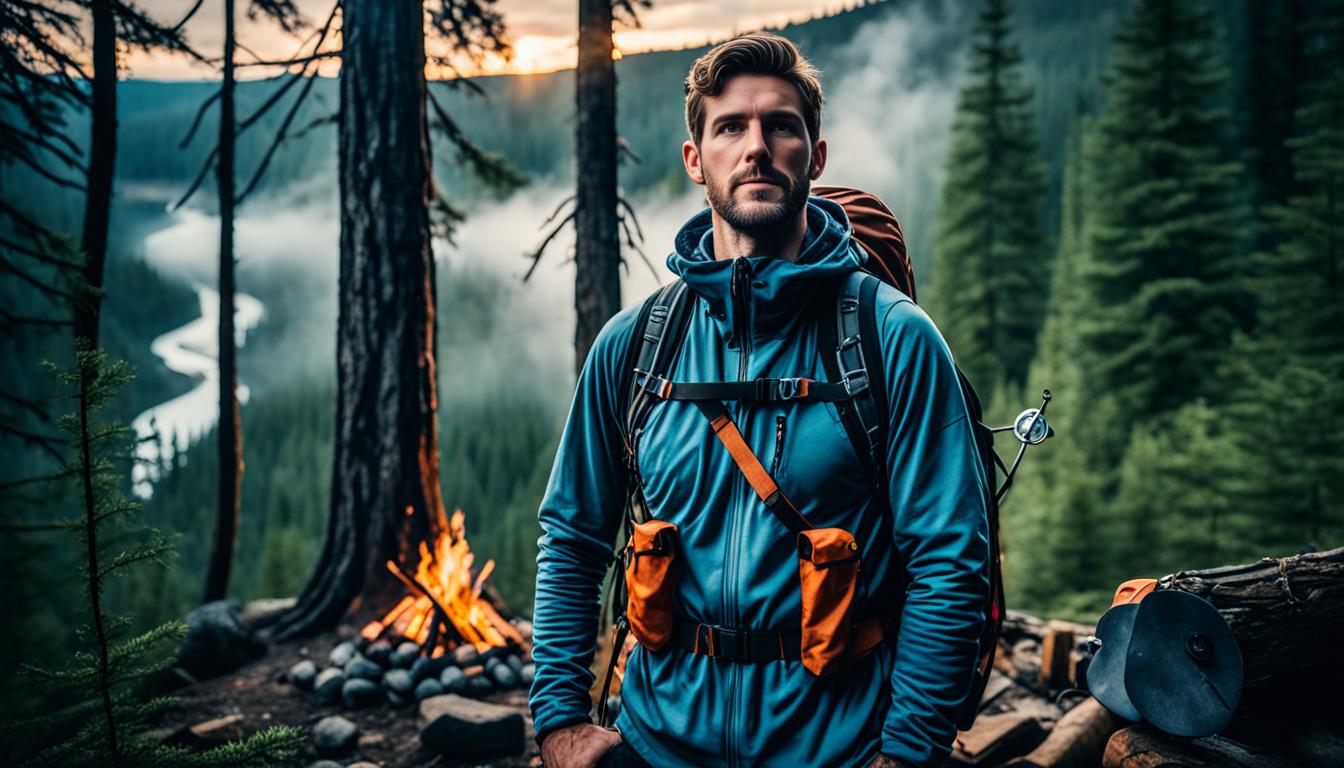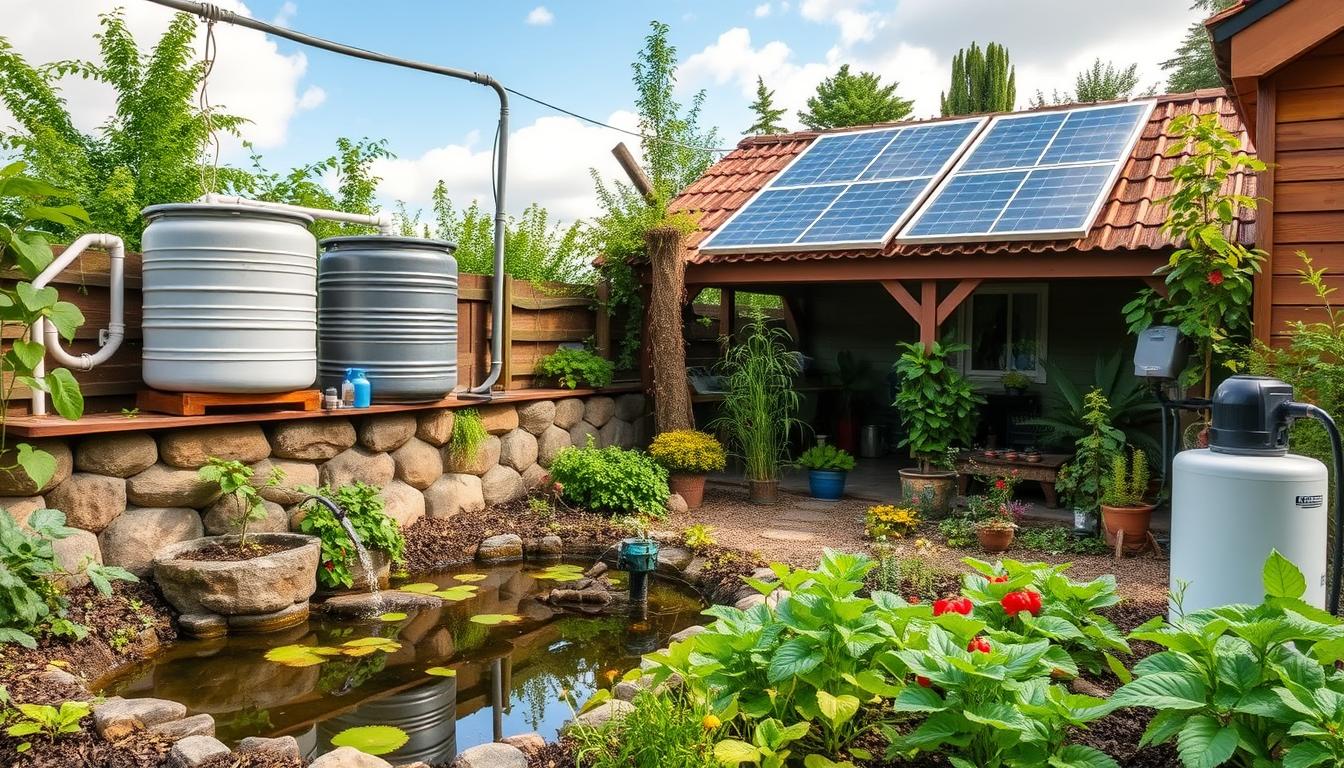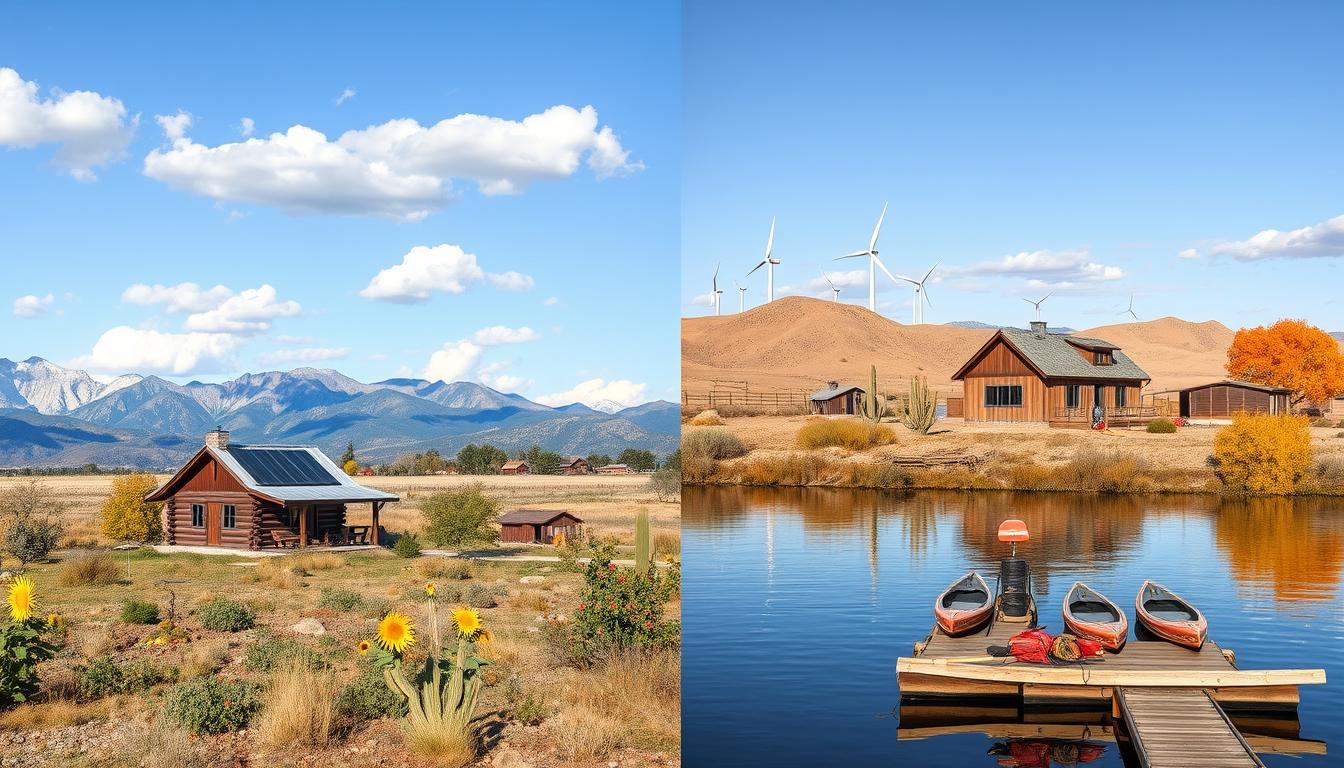Exploring the great outdoors can be thrilling, but it’s key to have the right survival skills. This guide covers 10 vital tips for adventurers. These skills include navigation, building shelters, starting fires, and first aid. Knowing these can save your life in the wild.
Key Takeaways
- Develop a calm and composed mindset to navigate challenging situations.
- Construct a sturdy and insulated shelter to protect against the elements.
- Acquire the knowledge to locate, purify, and conserve water sources.
- Master various fire-making techniques to stay warm and signal for rescue.
- Learn to identify and forage for edible wild plants, as well as hunt and trap for sustenance.
Maintain a Calm Center
In the wilderness, having a positive mindset and mental preparedness is key to survival. Many overlook the psychology of survival, but it’s vital for how we handle tough situations.
Staying Cool and Composed
When you’re in a survival situation, it’s easy to panic. But panicking can make you less aware and lead to bad choices, upping the risk of getting hurt or worse. It’s crucial to learn how to handle stress and keep your mind clear and rational. This is key to doing well in the wild.
- Practice deep breathing exercises to calm the mind and body.
- Engage in mental imagery, visualizing successful outcomes and scenarios.
- Maintain a positive attitude by reframing challenges as opportunities.
“The greatest weapon against stress is our ability to choose one thought over another.” – William James
By focusing on a positive mindset and mental preparedness, you can better navigate the wilderness psychology. This mental strength can be the difference between life and death in survival situations.
Construct a Survival Shelter
When you go into the wilderness, having a good shelter is key to staying alive. It’s important to pick the right spot, build shelters with natural materials, and make them warm and safe. These skills are vital for anyone who loves the outdoors.
Identifying Suitable Locations
First, find a good spot for your shelter. Look for high ground, shelter from the wind, and water nearby. Stay away from low spots that might flood and places with lots of plants that could bring animals.
Building Different Shelter Types
You can make many kinds of shelters in the wilderness, each with its own benefits. From simple tarp shelters to complex debris huts and snow caves, the choice depends on what materials you have and the weather.
- Tarp Shelters: These are fast to set up and protect you from the weather.
- Debris Huts: Use branches, leaves, and moss to build a sturdy shelter that keeps you warm.
- Snow Caves: In snowy areas, snow caves are great for keeping warm and safe from the cold.
Insulating for Warmth and Protection
Insulation is key to keeping your shelter warm and safe. Collect dry leaves, pine needles, or animal fur to line your shelter. Make sure it’s sealed tight to keep out drafts and keep the heat in.
“A well-designed and insulated shelter can mean the difference between life and death in the wilderness.”
Learning how to build a shelter can save your life in tough outdoor situations. With the right skills and materials, you can stay safe and warm on your adventures.
Find and Purify Water
In the wilderness, finding and purifying water is key to survival. It keeps you hydrated and helps you stay healthy. With the right skills, you can make sure the water is safe to drink.
First, learn to spot safe water sources. Look for streams, springs, and melting snow or ice. These can be good places to find water. But remember, this water might have harmful stuff like bacteria or parasites.
To keep your water safe, use water purification methods. Boiling water kills bad germs. Filtration and chemical treatments can also clean out contaminants. Having a good water filter or purifier is crucial for staying hydrated in the wild.
“Drinking untreated water can expose you to harmful bacteria, parasites, and viruses, so it’s crucial to know how to make water safe for consumption.”
Learning to find and purify water sources in the wilderness helps you stay healthy. It’s important to be careful and take steps to keep your water safe. This can save your life in a survival situation.
- Identify reliable water sources, such as streams, springs, and melting snow/ice.
- Use boiling, filtration, or chemical treatments to purify the water and make it safe for consumption.
- Invest in a quality water filter or purifier to ensure consistent access to clean, drinkable water.
Master Fire-Making Techniques
In the wilderness, fire is key for survival. It gives warmth, light, purifies water, and helps signal for help. Learning how to make fire is vital for outdoor lovers. It’s about building a fire pit, using the right fuels, and creating fire structures. Knowing these skills can save your life outside.
Building a Fire Pit and Reflector
First, build a proper fire pit for a reliable wilderness fire. Pick a spot away from flammable stuff like branches and leaves. Clean the area and make a shallow hole. Use rocks or a reflector to keep the flames in and direct the heat.
Understanding Fuels and Fire Structures
Choosing the right fuels is key for a good fire. Collect tinder (dry grass or birch bark), kindling (small twigs), and bigger logs. Arrange them in a teepee or log cabin style for a steady burn.
Mastering Various Fire-Making Methods
- Friction-Based Methods: Use bow drills or fire plows to create sparks from friction.
- Striking Methods: A flint and steel or magnesium starter can make sparks to light tinder.
- Lens-Based Methods: A magnifying glass or lens can focus sunlight to start fires.
Practice these fire starting, wilderness fire, and primitive fire making skills before emergencies. It can be the difference between surviving and struggling in the wild.

“The ability to make fire is the greatest discovery ever made by man.”
Skills For Wilderness Survival: Foraging and Gathering Food
In a wilderness survival situation, knowing how to forage and gather food can change the game. Learning to spot edible wild plants and use hunting, fishing, and trapping can give you a steady food supply. This helps you survive in the wild.
Identifying Edible Wild Plants
Foraging well means knowing which wild plants are safe to eat. You need to learn a lot and watch closely. Plants like dandelion greens, cattail roots, wild berries, and acorns are good to eat. But, it’s crucial to know how to identify and prepare them safely.
Hunting, Fishing, and Trapping
Primitive hunting, fishing, and trapping are also key skills for survival. Making simple tools, like spears or snares, can get you food from small game or fish. Being patient, quiet, and understanding animal behavior is important for success.
“The wilderness is a harsh teacher, but an excellent one. It tests your ability to adapt and thrive in the most challenging environments.”
Adding foraging, hunting, fishing, and trapping to your survival skills can boost your chances of finding food in the wild. These skills, along with staying calm and resourceful, can be the keys to surviving.
Wilderness First Aid and Medicinal Plants
In the wild, knowing wilderness first aid and using local medicinal plants can save lives. These skills help you handle emergencies and keep you safe outdoors.
Wilderness First Aid Essentials
When you’re in the wild and get hurt or sick, you must act fast. Learn how to treat wounds, fix broken bones, and do CPR. Make sure you have a first aid kit for outdoor adventures.
The Power of Medicinal Plants
Nature has many medicinal plants that can help with illnesses in the wild. Learn to spot and use medicinal plants in your area. Knowing how to harvest and prepare them for herbal remedies is key when you’re far from help.

“In the wilderness, your ability to effectively respond to medical emergencies can mean the difference between life and death. Embracing the power of medicinal plants and wilderness first aid skills is a crucial aspect of responsible outdoor exploration.”
Learning about wilderness first aid and using medicinal plants makes you ready for the wild. It helps you stay safe and confident in any situation.
Essential Survival Gear
In the wilderness, having the right survival gear can be a lifesaver. Skills are key, but a good survival kit gives you the tools you need. It’s important to get the right gear and learn survival skills for wilderness preparedness.
Building a Survival Kit
Creating a detailed survival kit is key to staying safe outdoors. This kit should have items for navigation, starting fires, first aid, and cleaning water. Important parts of a good survival gear kit include:
- Compass and map
- Firestarters (matches, lighter, flint and steel)
- Knife or multi-tool
- Water purification tablets or filter
- First aid supplies
- Signaling devices (whistle, mirror, flares)
- Survival blanket or tarp
Prioritizing Skills Over Gear
A good survival kit is important, but survival skills are even more valuable. Knowing how to navigate, build shelter, start fires, and find food and water is crucial. Learning these skills can save your life in an emergency. It’s better to focus on skills than just gear.
“Survival is not about the gear you carry, but the skills you possess.”
It’s important to balance your survival gear with your wilderness preparedness skills. Having the right techniques and tools helps you handle outdoor challenges better.
Signaling and Navigation
Learning how to navigate in the wilderness and signal for rescue can save your life. Knowing how to use maps, compasses, and GPS helps you stay on track. But it’s also key to know how to use natural landmarks and the stars to find your way.
Using Natural Landmarks and Celestial Navigation
When you don’t have your usual navigation tools, pay attention to your surroundings. Learning to use the sun, stars, and other natural signs to find your direction is vital. Knowing important landmarks like mountains, rivers, or coastlines helps you stay oriented and track your path.
Signaling for Rescue
Being able to signal for help in an emergency is crucial. Techniques like starting a smoky fire, using shiny surfaces to flash lights, or making ground markers can help you get noticed. Knowing the best ways to signal and practicing them can be a lifesaver when time is short.







